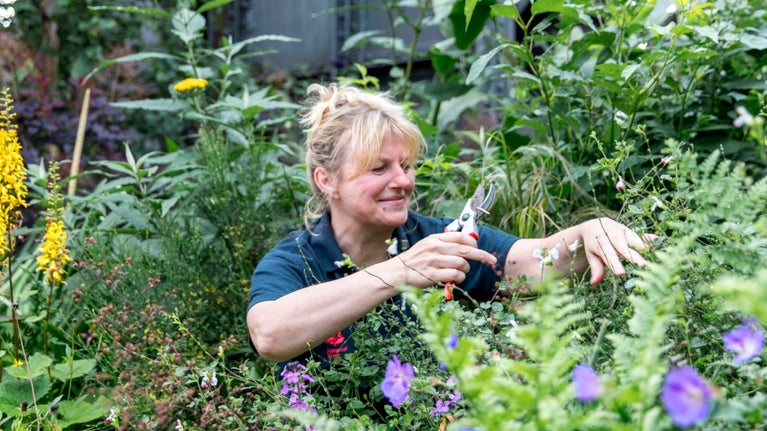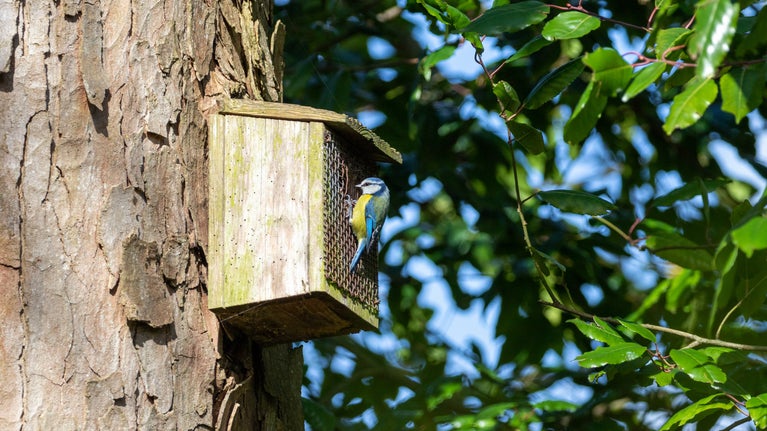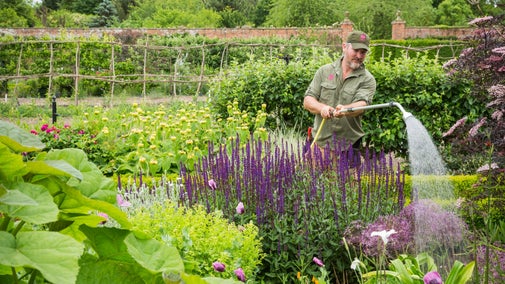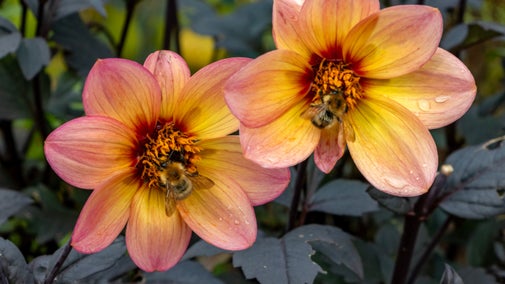
Get gardening
Our gardeners are on hand with ideas for your garden, plot or window box. From planting veg to tackling weeds, they’ve got all the important topics covered.

You can get closer to your local wildlife by making your back garden a safe haven for nature. Here are nine things you can do in your garden to help birds, insects and animals.
Long grass is one of the rarest garden habitats and by letting some or all of your lawn grow you will make space for many plant and insect species. Mowing the lawn only once every four weeks gives ‘short-grass’ plants like daisies and white clover a chance to flower in profusion, boosting nectar production tenfold.
Birds are an important part your garden's ecosystem. Help them thrive by planting trees like rowan and wild cherry, creating bird boxes and putting out bird food (not bread) in winter. Situate boxes and feeders well out of reach of cats and keep feeders clean.
Climbers are great way of covering walls and fences to hiding and nesting places for wildlife. Ivy is especially useful as the autumn flowers are sources of pollen for insects and the winter berries are loved by birds. Honeysuckle is also good for wildlife and very attractive.
Trees and hedges offer roosting and nesting sites and become natural highways for birds and mammals to move around safely as well as valuable shelter and cover from inclement weather and possible predators. Even woodpiles of cut branches, twigs, compost and trimmings can be fantastic places for animals and insects to live, feed and hibernate.

Leave piles of rocks, twigs and rotting wood in your garden. These will provide shelter for all sorts of important insects, such as beetles and spiders. Dead and rotting wood is a habitat which is in very short supply.
A pond is a real boost for wildlife. It doesn’t have to be huge – you can use a buried bucket or trough. If you do want a big pond however, make sure there are sloping sides to help wildlife get in and out. A pond is best filled with unchlorinated rainwater from a water butt and planted with some native species.
A compost heap is a win-win: it gives you a way of turning waste into compost which will naturally enrich your soil, plus it may also provide a warm hiding place for many creatures including slow-worms. To avoid attracting rats, never add bread or other cooked food.
Don’t lock out hedgehogs and frogs. Make sure your garden fences have some gaps at the bottom that can allow wildlife to move through from plot to plot. This will help link different habitats together.
Flowers look beautiful and bring colour and scent into your garden. They also provide food for many insects. Grow as many varieties as possible to ensure pollen and nectar almost all year round. Choose single-flowered varieties and native species if possible.
Learn to relax about weeds. The leaves of plants such as nettles, dandelions, groundsel and even brambles are important sources of food for the larvae of many insects, including butterflies and moths. Some ‘weeds’ also flower for a long time, whatever the weather, so can provide nectar and pollen when other sources might be absent.

Our gardeners are on hand with ideas for your garden, plot or window box. From planting veg to tackling weeds, they’ve got all the important topics covered.
Keep your garden or outdoor space looking its best through the warmest and driest season of the year with these summer gardening tips.

Learn how to make your own rose arch from former Mottisfont head gardener Jonny Bass, plus an alternative for smaller gardens.

Discover top tips on getting the most from your allotment or patch, and find out why growing your own fruit and vegetables is good for you in more ways than one.

Find out where you can explore the most bee-friendly gardens we care for, filled with pollinators' favourite flowers. Some places have hives and produce their own honey, which you can buy to take home.
